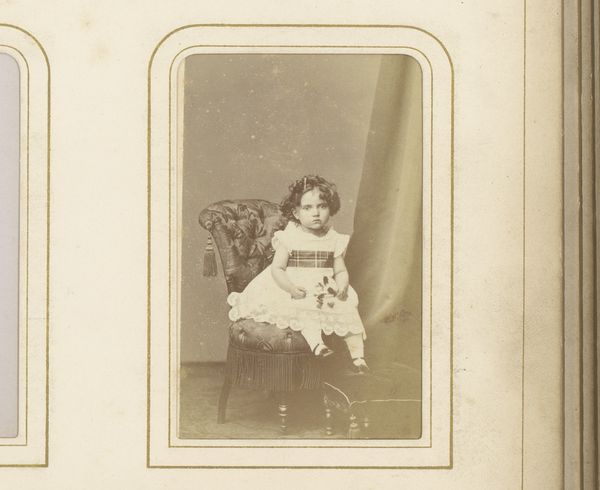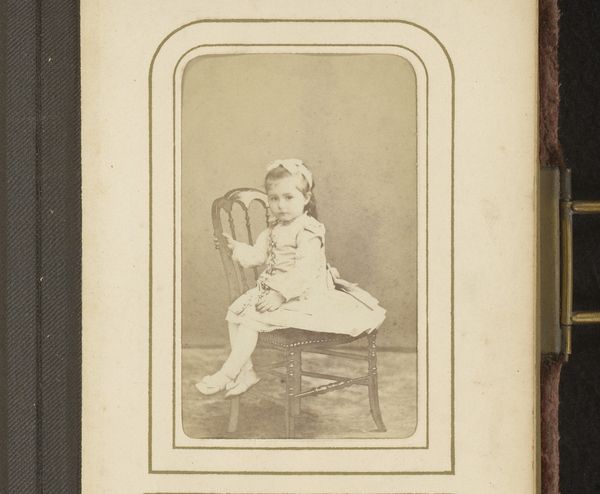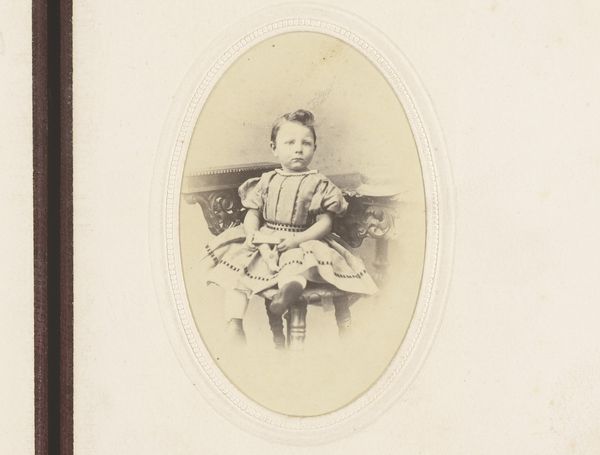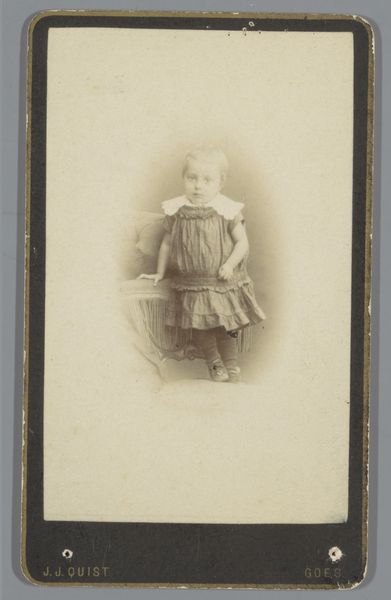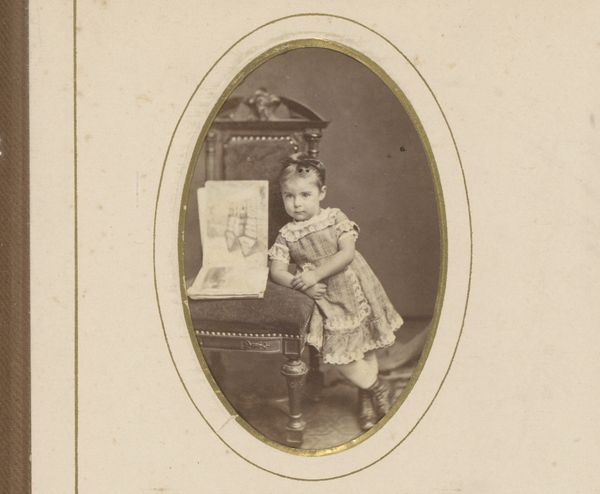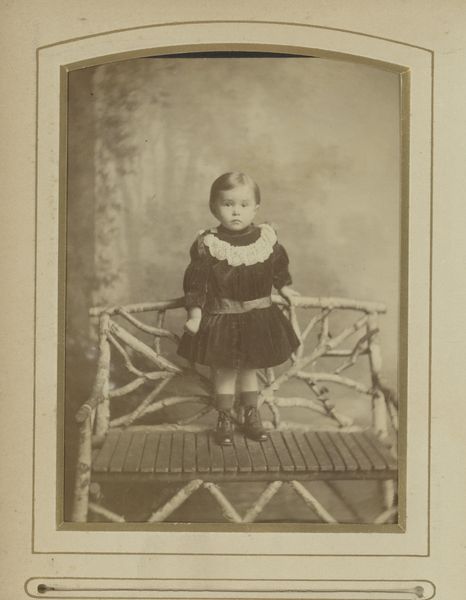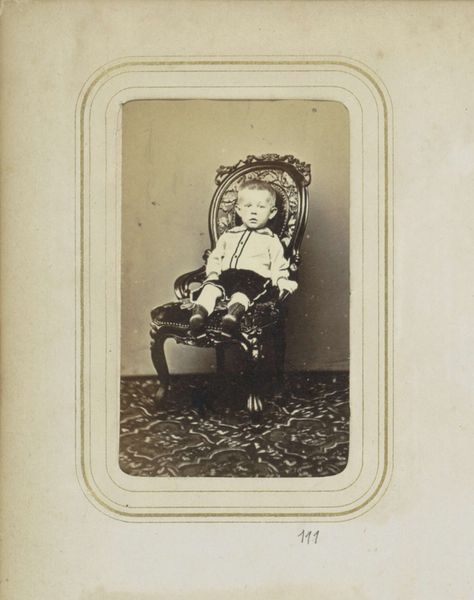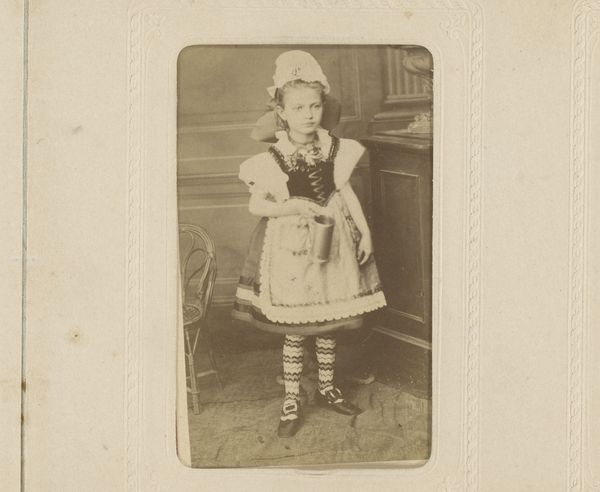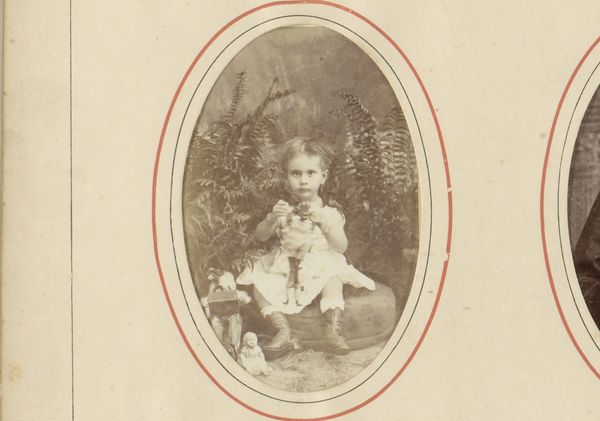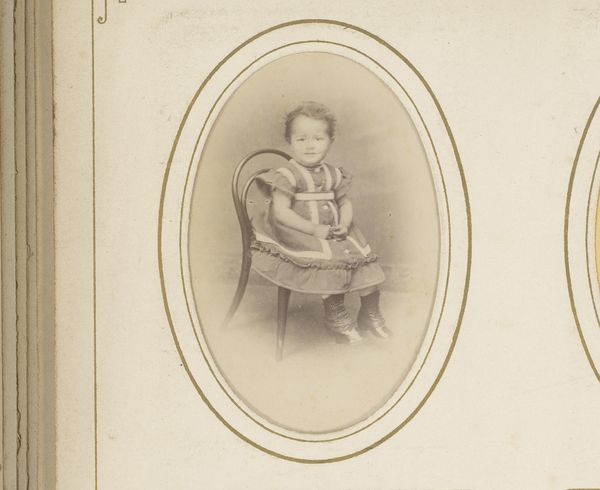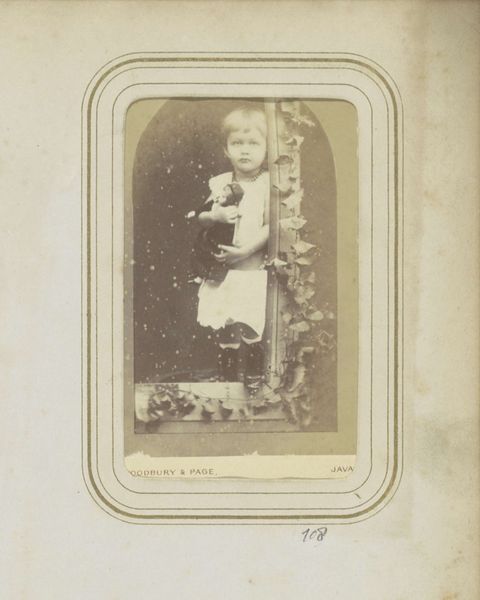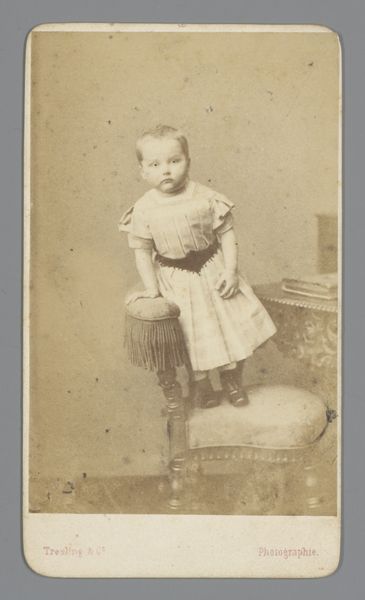
photography
#
portrait
#
16_19th-century
#
photography
#
historical photography
#
19th century
#
realism
Dimensions: height 83 mm, width 50 mm
Copyright: Rijks Museum: Open Domain
Editor: Here we have a photograph, "Portret van een meisje, zittend op een speelgoed dier," by Jules Gèruzet, dating from about 1859 to 1874. It depicts a young girl with her toy animal. The overall tone feels very formal and composed, even a little melancholic. What strikes you about this piece? Curator: This image invites us to consider the cultural construction of childhood in the 19th century. How was girlhood represented and experienced? This portrait is staged; it’s not a candid snapshot. Consider the girl's clothing, the toy animal – these are carefully chosen props that reflect certain values and expectations of that era. How do you think the image participates in or challenges those societal norms? Editor: I hadn't thought about the constructed nature of the image. The dress, for instance, it's not something a child would necessarily play in easily. Does the toy animal serve a particular symbolic function, perhaps representing innocence or domesticity? Curator: Precisely. These symbols are not neutral. Think about how gender roles were being solidified through visual culture. The girl is literally sitting "upon" this toy, perhaps suggesting her future role within the domestic sphere? Does it bring to mind other depictions of women or children during the same period? Are there parallels in paintings or literature? Editor: That's a powerful reading, I’m not sure that is the intention of the artist. It does seem she has agency over the toy she is sitting on. Perhaps it is symbolic of having control, even in a confined role. Curator: It’s about acknowledging the complicated historical forces at work. Her agency within the space she’s been granted. This photograph makes us examine assumptions about how gender and class shaped individual experiences. Editor: Thank you. This has given me a new perspective on understanding not just the photograph but the social framework it exists within. Curator: Agreed. It is essential that we consider the power dynamics represented, the constraints and expectations of the subject, to decode its multiple layers of meaning.
Comments
No comments
Be the first to comment and join the conversation on the ultimate creative platform.
